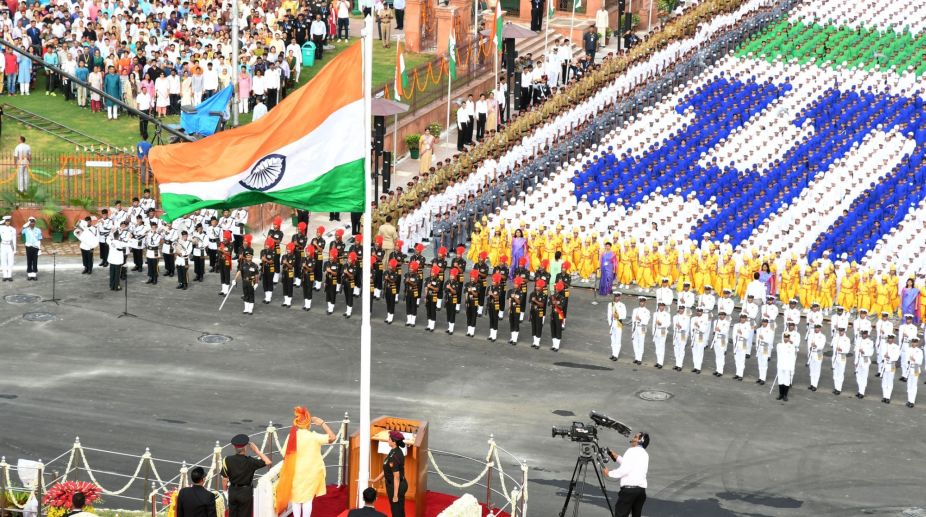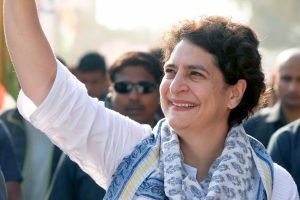Moviegoers who watched Viceroy’s House, which ran in Singapore theatres last month and is a film set in what is now India’s Rashtrapati Bhawan, would have had glimpses of the furies that ravaged the country at birth and the chaos that marked its arrival.
Added to the many disparities of the vast land and its varied people, new animosities were injected by politicians, aided by a departing colonial master that adroitly played the game of divide and rule and whose effects are felt to this day. It is from these ashes that, 70 years later, the India of today has emerged. There are different ways to measure a nation’s success.
One, obviously, is to benchmark against its peers. In India’s case, the obvious comparison would be with China, which has dramatically emerged as the world’s No. 2 power and economy in the same period as India. The other is to judge India by a different yardstick – the daunting hurdles it has overcome to reach its current status as Asia’s second most powerful nation and third biggest economy behind China and Japan.
Going by the first, China has lifted more than 600 million from poverty – a stunning feat of progress – and has markedly better human development indicators than India. Its top universities are world class, it is a massive producer of patents, has started making civilian aircraft and is making great strides with its space programme.
Militarily, it has begun to challenge the United States and increasingly projects its power all the way from Japan to Djibouti in Africa. For the more accurate measure of the Indian journey, however, you need to map it in its own peculiar context.
Trouble with Pakistan over Kashmir began the very next year after their joint emergence as independent nations in August 1947.
It paid a price for its determination to plough a middle furrow in foreign affairs with its non-alignment policy (US Secretary of State Dean Rusk called it “immoral” at the time). Spurned for this reason by the Americans, India, seeking to speedily build up its critically needed infrastructure, turned to the Soviets to build the first public-sector steel plant in Bhilai, Madhya Pradesh state. That would start a remarkable friendship with Russia that continues to this day, even as shifting geopolitical sands require New Delhi to hew closer to Washington, DC. Still, Western help would come in other ways, most notably in the Green Revolution that helped ease the food shortages that marked the 1960s.
Two seminal events marked the first quarter century of India’s life. The first was the loss of Tibet as a buffer state in the mid-1950s when the People’s Liberation Army moved in to occupy it, causing the Dalai Lama to flee to India. This, in some ways, led to the 1962 war with China. It had some remarkable effects on India.
For one thing, the war unified the nation as never before. Women in southern India, thousands of kilometres from the battle zone, stood in line to donate their wedding jewellery to the war effort. What ensued was a massive defence modernisation effort, with Soviet help. An atomic energy programme that was initiated soon after independence turned into an accelerated nuclear weapons programme.
All this came together in 1971 when India midwifed the birth of Bangladesh, assisting East Pakistan’s split away from West Pakistan. It was the second seminal moment of that quarter century for India and it would cement its role as the South Asia hegemon. Three years later, it would test its first atom bomb.
Meanwhile, nationhood progressed, sometimes in subtle ways. Food shortages of the 1960s brought rationing that put wheat flour, a Northern Indian staple, in southern homes and, conversely, rice in northern homes. These days, the humble masala thosai of the South, where linguistic nationalism raged four decades ago, is reckoned to be the country’s most popular dish. And India got its first prime minister from the southern states in 1991, when Mr P. V. Narasimha Rao took the job, further evening the regional divide.
Today, the southern states are powerful growth engines for a US$2.4 trillion (S$3.3 trillion) economy expanding at about 7 per cent per annum where air travel – to use just one indicator – is growing at close to 20 per cent every year.
This year, India’s gross domestic product looks set to pass that of Britain, its former colonial master. In hindsight, the 1975-1990 period has to be recognised as the era of missed opportunities. An unpopular Emergency Rule imposed by Mrs Gandhi from 1975 to 1977 shook India’s muchadmired democratic experiment.
Her proclivity to use religion to further her political ends led the vital border state of Punjab into a morass, one that would claim her own life in 1984 when she was assassinated by her Sikh bodyguards. Indian interference, then intervention, in Sri Lanka widened the ethnic divides of that nation and led to the assassination seven years later of her son and successor, Rajiv Gandhi, by a Sri Lankan Tamil woman suicide bomber.
India’s secular fabric also came under strain, partly under the influence of developments in the neighbourhood.
Pakistan, under the military ruler Zia ul Haq, took a decisive turn towards turning into an Islamic nation. Sri Lanka, which had changed its name from Ceylon, put the Sinhala lion on its flag, aggravating the ethnic divide between majority Buddhist Sinhalas and Tamils, who are mostly Hindu. Nepal was a Hindu kingdom.
Even tiny Bhutan had its own ethnic cleansing, pushing out Nepali Hindu settlers who threatened to overwhelm the Buddhist population. All this, plus a sense that Congress had cynically pandered to the Muslim vote bank to the detriment of the majority community led to the rise of Hindu nationalist forces that had been dormant since Mahatma Gandhi was assassinated in 1948 by a Hindu chauvinist.
Its worst manifestation came in December 1992, when Hindu zealots pulled down the 16thcentury Babri Masjid in Uttar Pradesh, claiming it was erected on land that was the birthplace of the Lord Rama. India’s Muslims have not missed the point that Modi was the first leader in 30 years to get a decisive mandate, and that he did so without fielding a single Muslim candidate in any of the 544 seats to the powerful Lower House of Parliament.
The 1992 events were a reminder that a dark side existed to an India that only the year before had captured the imagination of the world by embarking on a policy of economic liberalisation. Soon, another looming event – Year 2000, or Y2K – would have the world reaching out to Indian talent to fix computers from going awry as the millennium dawned.
From this would emerge India’s vaunted software and outsourcing industry, boosted by telecom reform that would leave India with the cheapest global rates for mobile telephony. Incredibly, the country would leapfrog the agriculture- manufacturing-services path to jump straight from farm to the services sector, which currently dominates the economy.
A parallel surge in the pharmaceutical sector would see the rise of generics makers that would not only bring down the cost of medicines at home, but also help India become a significant exporter, with names such as Lupin and Dr Reddy’s Laboratories as famous in their field as Tata Consultancy Services and Infosys were in outsourcing.
More recently, another dramatic move in Indian nationhood has taken place. In its 70th year as a free nation, it has successfully made the move to being a single market with the introduction of a nationwide goods and services tax. Despite the near-term hiccups and the challenges of implementing the new laws, it is reckoned that GST could boost growth by as much as two percentage points. Under Modi, India has become a top draw for foreign direct investment, and is steadily climbing the ranks of places friendly for business.
At the federal level, corruption has been remarkably curbed, a significant achievement in itself. While Mr Modi could be said to be particularly development-friendly, the nation has unquestionably made steady progress down the decades. Birth rates are stabilising as development takes hold and life expectancy at birth improves, polio has been eradicated and education is showing up in surveys as the No. 1 discretionary spend in household expenditures.
It has the most cost-efficient space programme in the world, sending ever larger satellites into orbit. Its successful Mars programme was, in Modi’s words, accomplished at a cost less than what it took to produce the Hollywood hit Gravity. Remarkably, much of the rocketry programme is led by women. Of equal significance, despite its poor literacy levels at birth and fear that the country got democracy before it was ready for it, there is a new thrill about the democratic experiment, which is sinking deeper roots. The turnout in the 2014 general election showed that even cynics felt it was important to exercise their franchise.
Across India, politicians are learning that the best way to win votes is proven performance in office, not election-time sops. Meanwhile, the world is showing up at its door. Next January, it intends to host the heads of all 10 Asean states as chief guests at its annual Republic Day parade. The once-cool relationship with the US has morphed into one in which America conducts more military exercises with India than with any other nation, Nato members included.
Indian warships regularly patrol waters from the South China Sea to the Gulf of Oman. From Singapore’s DBS Group to America’s PepsiCo, Indian names are increasingly prominent in C-Suites around the world. Could India do better?
Yes. Every silver lining has its clouds, and in India there is no shortage of either. Ties with key neighbours China and Pakistan are woefully frayed. The communal divides of Partition haven’t healed, and fresh sores are showing up, radiating into even minority communities like Christians, who have always felt secure in India. In absolute terms, poverty is still widespread and economic disparities are widening by the day.
The prospect of jobless growth is rising as a worry, more so since India has such a young population. But then, that is India. Two steps forward, one sideways and one back. The important thing is that the forward movement always exceeds the regression.
(The Straits Times/ ANN)












